BWCA Routes
While there are many different routes available, we’ve listed some of the most popular ones below. While we do have quite a few BWCA routes listed, you don’t need to follow a specific route while out in the BWCA. You’re free to explore as you like, as long as you have a permit for the area you’d like to visit. If you would like to learn more about how best to choose a BWCA route you can listen to this podcast: Tumblehome-A Boundary Waters Podcast-BWCA Route Planning Advice
Clearwater Route
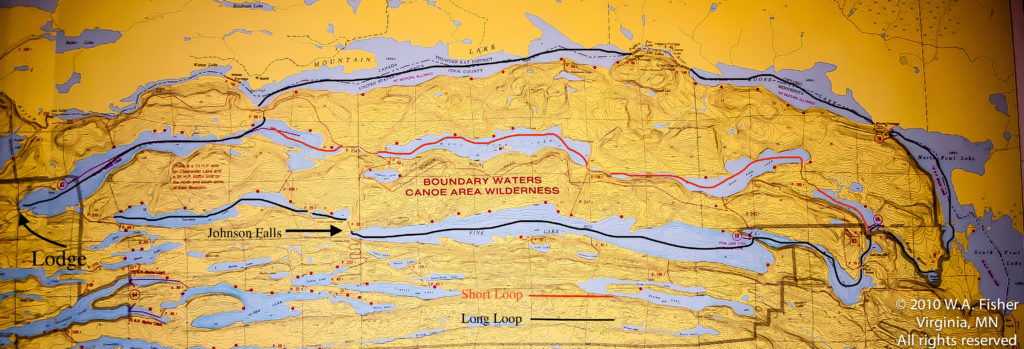
This area is referred to as the “Minnesota Mountains” for good reason. With crystal clear waters below and towering 400ft cliffs above, this incredibly scenic route will take you through some of the most unique lakes in the state. The Border Route Trail runs through the area as well with multiple spur trails which climb quickly to the tops of those towering cliffs, offering splendid views into Canada and beyond. Plenty of fishing options abound depending on what you’re looking for. Clearwater, Mountain and East and West Pike are great Lake Trout lakes in the spring.
If it’s Walleye you’re after Caribou and Pine lakes are tough to beat. Smallmouth Bass and Northern Pike can be found in good numbers throughout the entire area, and even a number of managed trout lakes holding Brook Trout can be found if you’re willing to work. No traveler through the various BWCA routes should miss a visit to Johnson Falls; a pristine set of wilderness waterfalls which offers refreshing swimming holes and seclusion.
A longer loop can be made by traveling the Canadian border lakes East to North and South Fowl. Moose Lake is seldom visited and may be one of the best Lake Trout lakes in the state.
Cross Bay-Poplar Route
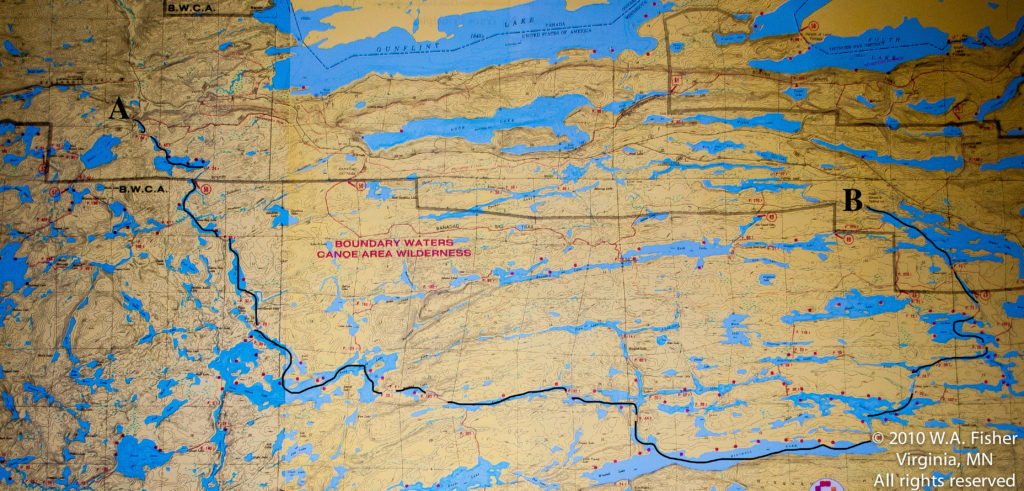
Of the BWCA routes, this route is nice as it can be traveled in either direction, although with predominant winds from the west you may want to start at Cross Bay Lake. The option for calling for a pick-up from Trail Center Lodge on Poplar Lake also makes starting at Cross Bay Lake the better option. This is a great route for those wanting to cover some ground and paddle smaller lakes. Smaller lakes give more protection with wind. You’ll enjoy some river paddling south of Ham Lake and have some good wildlife opportunities. You will find plenty of Smallmouth Bass and Northern Pike throughout the route, though if you are looking for Walleyes the lakes south and west of Poplar Lake is where you should start.
There are many options to expand this route. Traveling north through Banadad and Rush Lakes will take you through quieter waters, while heading south through Winchell offers excellent campsites and Lake Trout fishing.
East Bearskin Route
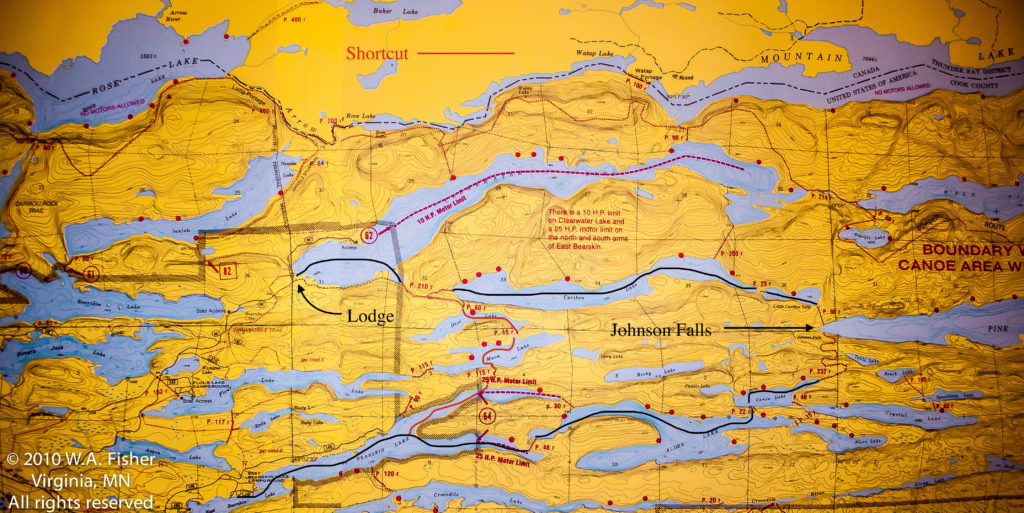
The lakes on this route are very popular with base campers. They are small and loaded with fish. Walleye, Bass and Northern Pike are plentiful. No visit through the BWCA routes would be complete without a side trip to Johnson Falls, which is popular on this route. Wildlife viewings are common. You can take this route and return to Bearskin for pick-up or paddle right back to Clearwater Lodge.
Frost River Route
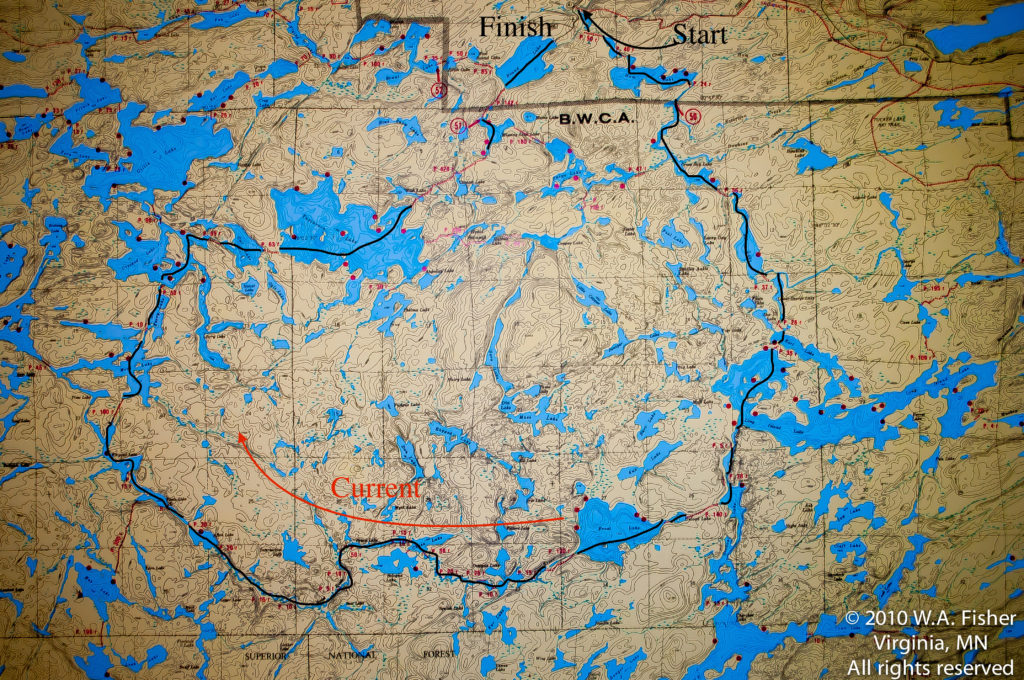
Frost Lake is in the heart of the BWCA Routes system and few people venture this far in. Frost River itself can be a challenge because of the number of turns and you definitely want to keep your map out at all times on the river. Due to the remoteness of the area and the lack of paddlers who venture in this far the distance between campsites is great. You will want to pace yourself and allow enough paddling time to ensure you make it to a campsite before dark. The campsite on Bologna Lake is amazing. You will feel like you are the only soul in the BWCA when camping there. Frost Lake has several sandy beaches and even a couple campsites on sand. Fishing is fair, mostly Northern Pike, Lake Trout, and some small Bass. You’ll want to consider the amount of water in the river if you are considering this route. It’s best to paddle this route in the spring or early summer in a clockwise direction. If you’re interested in this route for mid to late summer please check with us about water levels. Although the portages may look short on paper, they are more difficult than most, with extreme climbs and drops.
Knife Lake Route
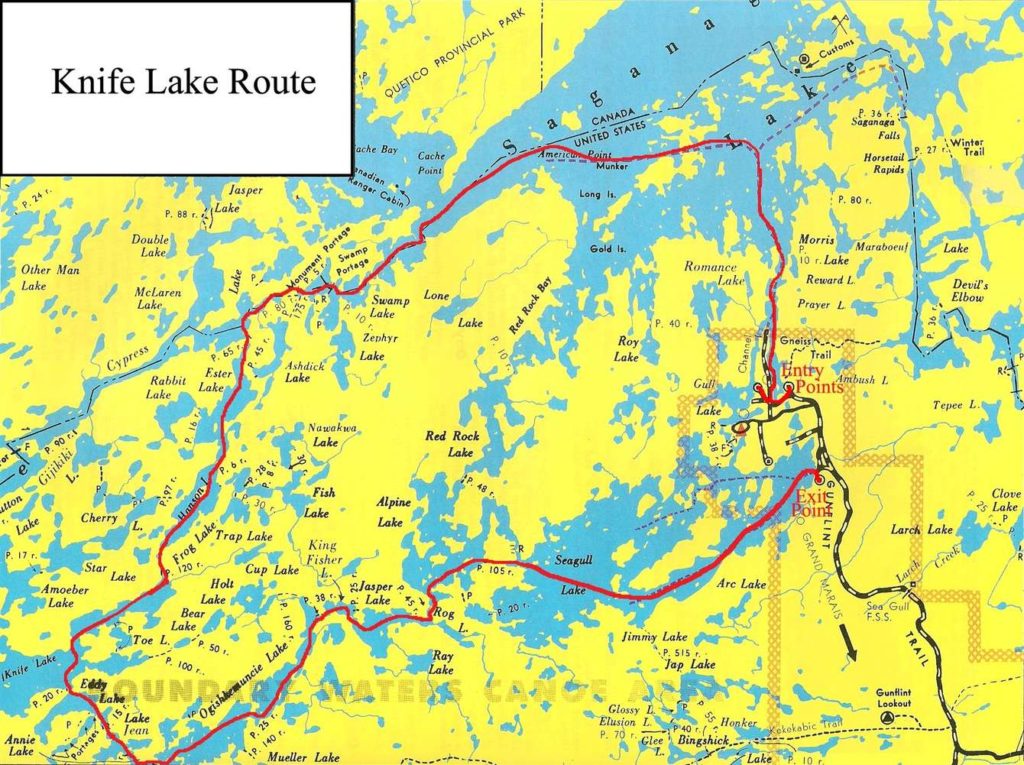
This route starts at the end of the Gunflint Trail and is perfect for those wanting to do it all. Few BWCA Routes offer everything this route does: it has waterfalls, large and small lakes, solitude, historic sites, cliffs, and excellent fishing. You must be willing to paddle; Knife Lake, the farthest point on this route, is about halfway between Ely and the Gunflint Trail. This is one of those areas that is so remote most visitors won’t see it. If you have extra time to spend on Knife Lake you can paddle to Dorothy Moulter’s island or hike to Thunder Point. Saganaga is a very large lake and needs to be respected on windy days. Ottertrack Lake is spectacular and you will see an historic monument portage. You can swim in Eddy Falls and a side trip to Mueller Lake will reward you with a second waterfall. Fishing is excellent with Walleye, Northern Pike, Lake Trout and Smallmouth Bass. Base campers usually like to get to Ogishkemuncie. If you have extra time, there are hundreds of expansion options and some extremely good campsites. If you are interested in crossing Saganaga Lake via motor boat we can arrange for a tow to American Point.
Little Saganaga Route
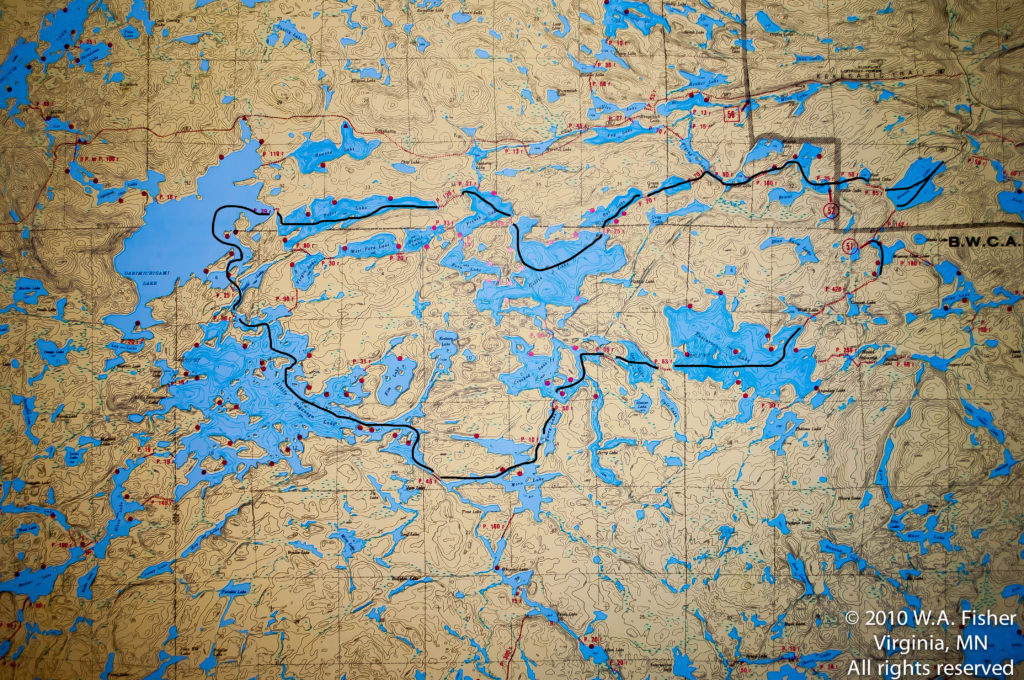
Although this route begins with rapid fire portaging, and ends with a 428rod doozy, the work is worth it. There are few BWCA Routes that offer as many 5 star campsites as this: Gillis, Gabimichigami, Little Saganaga and Tuscarora Lakes all offer plenty of 5 star campsites. There are a multitude of options to extend or shorten this route, making it a great option for groups on the fence about how long they want to spend in the park. Mueller Falls and access the Kekekabic hiking trail make for great day trip options. Fishing through the area will predominantly consist of Lake Trout and Northern Pike.
Poplar-Ram Route
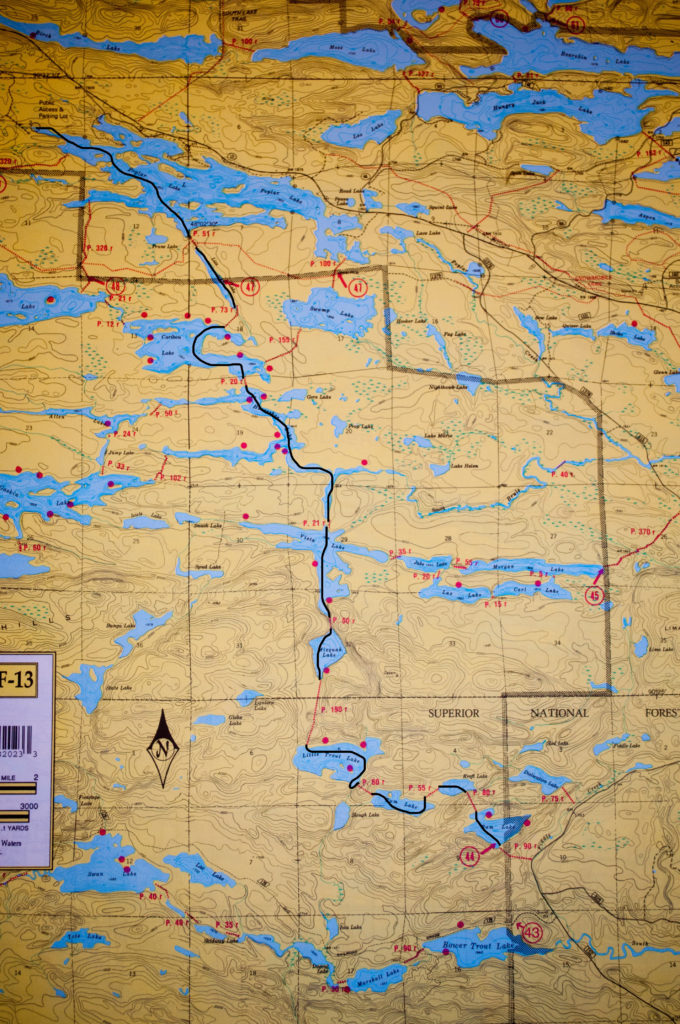
If your idea of a great time is fishing in the morning, fishing in the afternoon, and fishing in the evening this is the route for you. BWCA Routes enthusiasts know that it is one of the better Walleye and Pike fishing areas on the trail. Heading even further in will reward you with better wildlife options since most of the terrain is flat and has some marshland, which is favored by animals like moose There are many options for both base campers and migrant campers. There are several exit points for this route. If you aren’t able to get a permit for this entry point we can put you in at Bower #43, Ram #44, Morgan #45, Meeds #48 or Skipper & Portage #49. Exit points can be any of the above mentioned entry points or Brule, Missing Link or Cross Bay.
West Bearskin Border Route

Rose Falls is always a popular stopping point on this route, and the cliffs above the falls should not be missed. If you want to hike you can take the Border Route Trail and explore old cedar groves or other overlooks into Canada. Duncan Lake, Rose Lake and South Lake are all good Smallmouth Bass lakes. South Lake is usually very quiet and has a quintessential remote BWCA feel. If you paddle this route you will have a chance to portage the historic Height of Land Portage where early Voyageurs had their initiation ceremony. Many people like to base camp on Duncan Lake or Rose Lake. North Lake offers great Lake Trout fishing in the spring, and the waters flowing between Little North and Gunflint Lakes are consistently filled with Walleyes. BWCA Routes experts recommend this route be traversed West to East, as winds from the West can make treacherous travels on Gunflint and South Lakes.
